Pursuit ends for Jules Verne Trophy
Published on November 27th, 2020
(November 27, 2020) – After three days at sea in their pursuit of the Jules Verne Trophy, co-skippers Franck Cammas and Charles Caudrelier and their crew on the 32-metre Maxi Edmond de Rothschild trimaran have halted their effort and will return to port.
This decision is due to a collision with an unidentified floating object that has limited the team’s ability to sail their boat at its full potential. Currently located to the north of the Cape Verde archipelago, the crew will now transit some 1900 miles in their return to Lorient, France.
“The decision to turn back really hasn’t been an easy one to make,” concluded team director Cyril Dardashti. “It was carefully thought out and all the different parties involved in the project were consulted and the crew made the decision.
“It is motivated by two elements: the incident that occurred yesterday and the technical consequences discovered this afternoon, together with the quality of the window we’ve enlisted in. Indeed, day after day, our weather observations are confirming that the South Atlantic will not be showing us her best side, with a Saint Helena High that is a long way south, forcing us not just to take a big detour around the outside but also to plunge deep into the south to round the Cape of Good Hope.
“Even though the routing is still giving us a passage within the record time, we know that such a feat would require us to be at our full potential, which unfortunately is no longer the case. Turning back today means we can quickly return to our technical base, effect the necessary repairs and then very quickly get back on standby ready to set sail again this winter to conquer the Jules Verne Trophy.”
Review of the damage:
26 November 14:00 UTC – On Thursday afternoon, whilst slipping along downwind at over 30 knots between the Azores and Madeira, the Maxi Edmond de Rothschild hits a UFO (Unidentified Floating Object). The impact is violent, immediately causing the 32-metre giant to slow. Franck Cammas and Charles Caudrelier’s crew alerts the shore team and begins its investigations. The effect of the impact on the rudder of the port float and more precisely its trim tab, has caused a piece of the steering system to break. David Boileau immediately switches back to his role of boat captain and quickly proceeds with the repair. After 1hr at a reduced pace, the latest addition to the Gitana fleet gets back out on the hunt for the record at high speed. Visually, the rudder blade is not damaged but the appendage proves to be hard to manipulate, which suggests there is damage to the system for raising and lowering the port rudder. For all that, a check is impossible as the area located at the end of the float is too exposed and too dangerous to venture out to. The Maxi Edmond de Rothschild continues her course towards the equator.
27 November 09:00 UTC – To adjust their trajectory towards the equator, the men of Gitana put in several gybes. During the second, completed in the morning, when switching onto port tack, those on watch on deck notice that the port foil is also damaged and the evidence the crew discovers leave no room for doubt; they are the result of an impact, likely the same one suffered yesterday afternoon. Despite the crew being motivated to carry on, a series of exchanges throughout the day with their technical director, Pierre Tissier, and the manager of the design office, Sébastien Sainson, conclude that the appendage can be repaired at sea but the crew would no longer be able to use it at its full potential.
Crew list:
Franck Cammas and Charles Caudrelier, skippers
David Boileau, trimmer/bowman
Erwan Israël, helm/trimmer
Morgan Lagravière, helm/trimmer
Yann Riou, trimmer/media man
Source: Gitana Team
The rules for the Jules Verne Trophy are simple – it is for the fastest time around the world by any type of yacht with no restrictions on the size of the crew, starting and finishing from the exact line between the Le Créac’h Lighthouse off the tip of Brittany and the Lizard Point in Cornwall. It was first won in 1993, with all nine winners as either catamarans or trimarans. The current challenge is to beat the record time of 40 days 23 hours 30 minutes and 30 seconds set by Francis Joyon and crew on the 31.5m IDEC Sport in 2017.
Record Facts
• Start and finish: a line between Créac’h lighthouse (Isle of Ushant) and Lizard Point (England)
• Course: non-stop around-the-world tour racing without outside assistance via the three Capes (Good Hope, Leeuwin and Horn)
• Minimum distance: 21,600 nautical miles (40,000 kilometres)
• Ratification: World Sailing Speed Record Council, www.sailspeedrecords.com
• Time to beat: 40 days, 23 hours, 30 minutes and 30 seconds
• Average speed: 21.96 knots
• Date of current record: January 2017
• Holder: IDEC SPORT, Francis Joyon and a 5-man crew
Split Time References – Full Crew:
Ushant-Equator: 4d 20h 07 ‘(Spindrift 2 in 2019)
Equator-Cape Aiguilles: 6d 08h 55 ‘(Banque Populaire V in 2012)
Cape Aiguilles-Cape Leeuwin: 4d 09h 32 ‘(IDEC Sport in 2017)
Cape Leuuwin-Cape Horn: 9d 08h 46 ‘(IDEC Sport in 2017)
Cape Horn-Equator: 7d 04h 27 ‘(Banque Populaire V in 2012)
Equator-Ushant: 5d 19h 21 ‘(IDEC Sport in 2017)
Here are the nine that have held the trophy:
2017 – Francis Joyon / IDEC SPORT (31.5m) – 40:23:30:30
2012 – Loïck Peyron / Banque Populaire V (40m) – 45:13:42:53
2010 – Franck Cammas / Groupama 3 (31.5m) – 48:07:44:52
2005 – Bruno Peyron / Orange II (36.8m) – 50:16:20:04
2004 – Olivier De Kersauson / Geronimo (33.8m) – 63:13:59:46
2002 – Bruno Peyron / Orange (32.8m) – 64:08:37:24
1997 – Olivier De Kersauson / Sport-Elec (27.3m) – 71:14:22:08
1994 – Peter Blake, Robin Knox-Johnston / Enza New Zealand (28m) – 74:22:17:22
1993 – Bruno Peyron / Commodore Explorer (28m) – 79:06:15:56


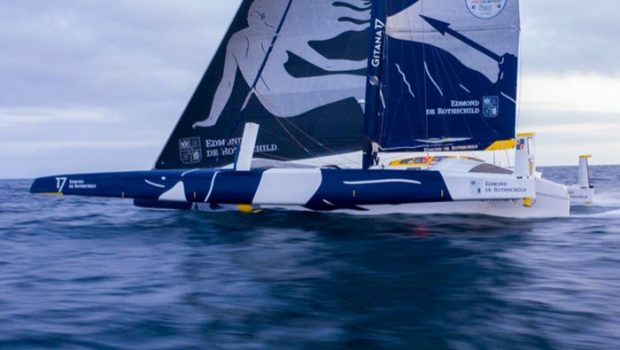


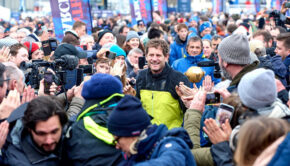
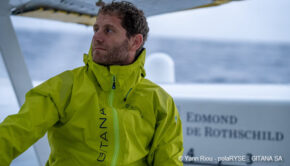
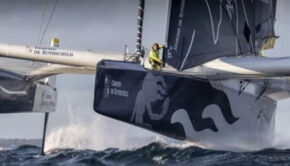
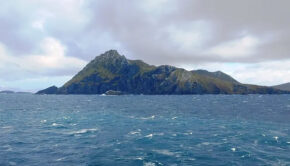
 We’ll keep your information safe.
We’ll keep your information safe.